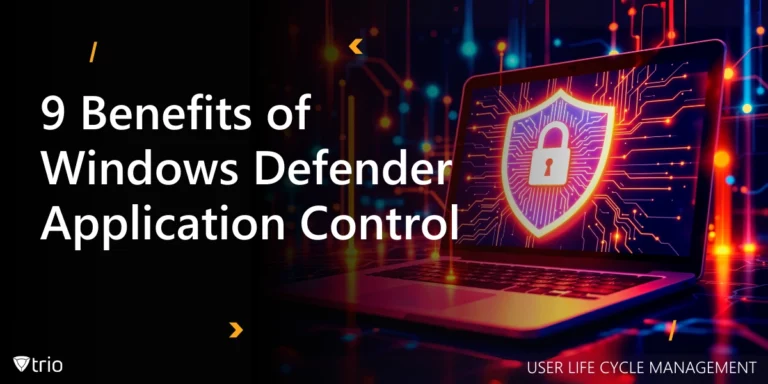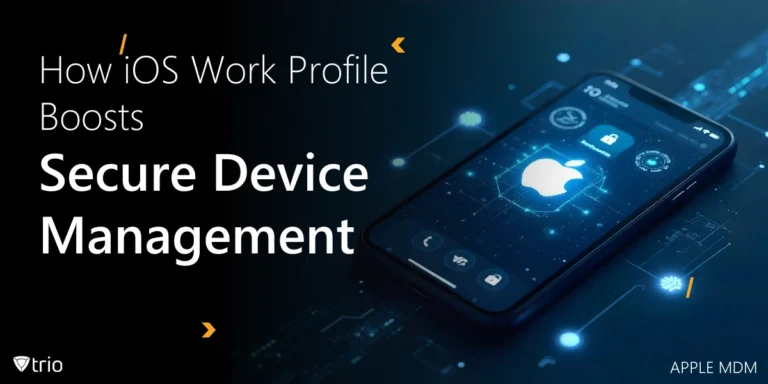In this blog post, we’ll delve into the importance of compliance, particularly with regards to NIST regulations, for organizations aiming to bolster their security measures and conduct business with US government agencies. Additionally, adhering to NIST standards can enhance trust and credibility, potentially attracting other businesses seeking reliable partners. We’ll provide an overview of NIST regulations, delve into three key cybersecurity standards set by NIST, and explore how Master Data Management (MDM) solutions can streamline IT compliance efforts. Types of compliance are crucial in ensuring alignment with regulatory requirements and industry benchmarks, offering a structured approach for organizations to mitigate risks and safeguard sensitive information.
What is NIST Compliance?
NIST stands for the National Institute of Standards and Technology. NIST compliance refers to adherence to the standards and guidelines set forth by this non-regulatory agency of the United States Department of Commerce. Their regulation has helped save organizations over 1 billion dollars. NIST develops and publishes standards, guidelines, and best practices in various areas, including cybersecurity, information security, and technology. Among the frameworks that NIST provides, we will cover three important ones, namely:
- NIST Cybersecurity Framework
- NIST 800-53
- NIST 800-171
Keep in mind that our summaries of NIST compliance standards are only meant to gain a better understanding of NIST requirements and for full compliance, you should visit the NIST website and read the full documents.

Summary of NIST Cybersecurity Framework
The NIST Cybersecurity Framework (CSF) was created in response to Executive Order 13636, “Improving Critical Infrastructure Cybersecurity,” issued by President Barack Obama in 2013, and it has since become widely adopted by organizations across various industries. Here’s an explanation of the key components of the NIST Cybersecurity Framework:
1. Framework Core
At the heart of the CSF is the Framework Core, which consists of five functions that represent the fundamental cybersecurity activities organizations should undertake to manage and reduce cybersecurity risk:
- Identify: This function involves understanding and managing cybersecurity risks to systems, assets, data, and capabilities.
- Protect: This function involves implementing safeguards to ensure the delivery of critical services and the protection of assets, including data, technologies, and facilities.
- Detect: This function involves identifying the occurrence of cybersecurity events in a timely manner.
- Respond: This function involves taking action to mitigate the impact of detected cybersecurity incidents.
- Recover: This function involves restoring capabilities or services that were impaired due to a cybersecurity incident.
2. Framework Implementation Tiers
The CSF provides four implementation tiers that organizations can use to assess and improve their cybersecurity risk management processes:
- Tier 1 – Partial: Organizations at this tier have limited awareness of cybersecurity risks and have ad-hoc processes in place.
- Tier 2 – Risk Informed: Organizations at this tier have developed risk management processes but may lack formalized cybersecurity practices.
- Tier 3 – Repeatable: Organizations at this tier have established formalized cybersecurity practices and are actively managing cybersecurity risks.
- Tier 4 – Adaptive: Organizations at this tier have dynamic and risk-informed cybersecurity practices that continuously adapt to evolving threats and changes in the cybersecurity landscape.
3. Framework Profiles
A Framework Profile is a representation of an organization’s cybersecurity risk management priorities, goals, and objectives. Organizations can develop their own unique profiles based on their specific business needs, risk tolerance, regulatory requirements, and other factors.
4. Framework Implementation Guidance
The CSF provides detailed guidance and resources to help organizations implement the Framework Core, develop Framework Profiles, and assess their cybersecurity risk management practices. This guidance includes case studies, best practices, and reference materials to assist organizations in applying the CSF to their specific contexts.
Summary of NIST Special Publication 800-53
This publication, titled “Security and Privacy Controls for Federal Information Systems and Organizations,” provides a catalog of security and privacy controls for federal information systems and organizations. It was developed by NIST to help federal agencies protect their information and information systems from various threats and risks.
NIST 800-53 is designed to provide a comprehensive and flexible framework for selecting and implementing security and privacy controls based on the organization’s risk management strategy and requirements.
The publication covers a wide range of security and privacy controls categorized into families, including access control, identification and authentication, audit and accountability, risk assessment, and more. While initially intended for federal agencies, NIST 800-53 has also been adopted by non-federal organizations, including private sector companies and contractors, as a reference for establishing and maintaining effective cybersecurity programs.
Summary of NIST Special Publication 800-171
This publication, titled “Protecting Controlled Unclassified Information in Nonfederal Systems and Organizations,” outlines security requirements for protecting Controlled Unclassified Information (CUI) in non-federal systems and organizations. It was developed by NIST in response to federal regulations requiring contractors and subcontractors to safeguard sensitive information.
NIST 800-171 aims to provide guidance to non-federal organizations, particularly contractors and subcontractors, on implementing security controls to protect CUI shared with or maintained on their systems. The publication specifies security requirements across 14 families of security controls, including access control, incident response, physical protection, security assessment, and more. These requirements are based on the security controls outlined in NIST Special Publication 800-53, adapted for non-federal systems and organizations.
NIST 800-171 primarily applies to non-federal organizations that handle CUI on behalf of the federal government or through contractual agreements. Compliance with these requirements is often mandated by federal contracts or agreements, such as the Defense Federal Acquisition Regulation Supplement (DFARS) clause.
Organizations subject to NIST 800-171 are required to assess their compliance with the specified security requirements, implement necessary controls and measures to address identified gaps, and periodically review and update their security posture to maintain compliance. Compliance with NIST 800-171 is typically enforced through contractual obligations with federal agencies. Failure to comply with these requirements may result in contractual penalties or loss of eligibility for federal contracts.
Download Our Free for NIST Cybersecurity Framework Checklist
Streamline your cybersecurity strategy with this free NIST CSF checklist. It helps you identify, protect, detect, respond to, and recover from cyber threats, ensuring compliance and stronger security. Download now!

How Trio Can Help With NIST Compliance Standards
Mobile Device Management (MDM) solutions such as Trio can play a significant role in helping organizations achieve IT compliance, including compliance with standards such as NIST frameworks and SOC 2.
Trio allows organizations to define and enforce security policies for mobile devices, such as smartphones and tablets. These policies can align with NIST compliance requirements for securing mobile devices, including requirements related to authentication, encryption, device management, and data protection.
Trio, in adherence to NIST standards, enables centralized management and configuration of mobile devices, ensuring that they are configured according to security best practices and compliance requirements. Administrators can remotely configure settings, deploy security updates, and enforce compliance with organizational policies using compliance monitoring software.
Trio facilitates NIST security controls by enforcing security policies across managed devices. It provides robust controls for security settings and continuous monitoring, aligning with NIST’s information security and risk management guidelines. Check out Trio’s free demo to benefit from its various other features including automated onboarding and device enrollment, as well as over-the-air updates and more.
See Trio in Action: Get Your Free Trial Now!
Conclusion
In conclusion, adhering to NIST compliance standards is crucial for organizations aiming to fortify their cybersecurity practices, meet regulatory requirements, establish trust with stakeholders, and ensure email compliance. By aligning with NIST frameworks such as the Cybersecurity Framework, NIST 800-53, and NIST 800-171, organizations can systematically identify and manage cybersecurity risks, bolster their resilience against cyber threats, safeguard sensitive information, and maintain compliance with email security regulations.
Moreover, leveraging tools like Mobile Device Management (MDM) solutions, such as Trio, can streamline compliance efforts by enabling centralized management, enforcement of security policies, and continuous monitoring of mobile devices. Compliance automation to NIST standards ensures that organizations adhere to the rigorous guidelines set forth by the National Institute of Standards and Technology (NIST), minimizing the risk of security breaches and ensuring data integrity. Trio’s comprehensive features align with NIST’s information security and risk management guidelines, offering organizations a robust solution to navigate the complexities of IT compliance seamlessly. Embracing NIST compliance not only strengthens an organization’s cybersecurity posture but also enhances its credibility and reputation in an increasingly interconnected digital landscape.




